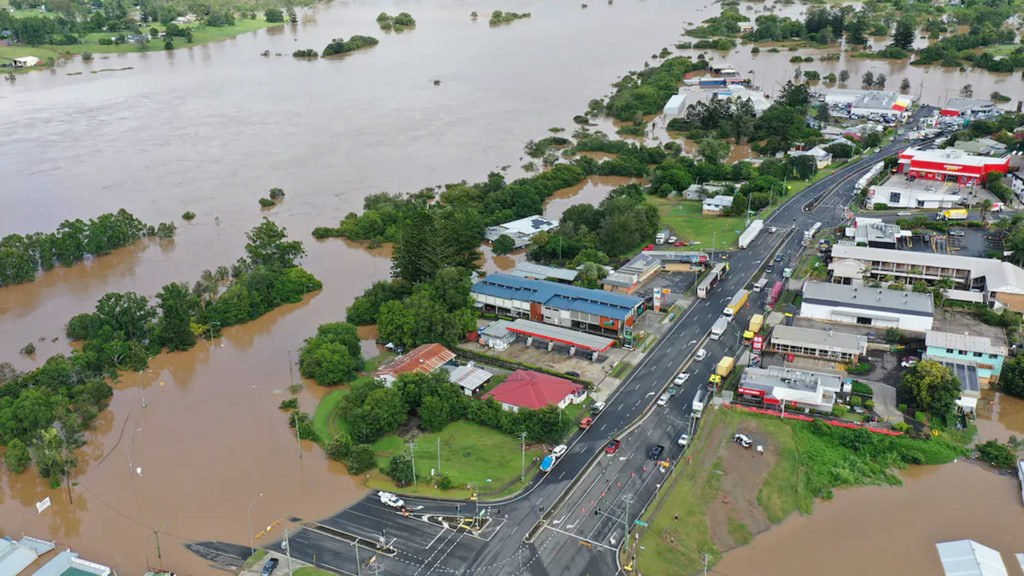by David Llewellyn
The Queensland flood event started in late November 2010 with the first heavy rainfall starting in northern Queensland in early December 2010, culminating that month with tropical cyclone Tasha on Christmas day. During the month rainfall figures in parts of the state were coming in at 294 mm in just 24 hrs and 573 mm for the month in others. In all cases records were being broken and by early January the Queensland Police Service (QPS) social media efforts were already underway. This social media capability had been signed off by the Deputy Commissioner in mid-2010 initially as a 6-month trial. On 9th January 2011, the Facebook audience for the QPS page grew from 16,500 to 165,000 within a very short space of time. Kym Charlton, Executive Director Media and Public Affairs, on the 10th January was sending Tweets from 04:45 through to 23:45 hrs.
By the 11th January 2011 the Wivenhoe Dam had reached record levels, recording a level 191% above the normal water storage capacity. While floodwaters peaked at 4.5 m in the early hours of 13th January in some parts of the state (figure 1), Brisbane was facing a catastrophic situation with waters from the Bremer River peaking at 19.4 m with many people quoted as leaving too late to evacuate – 200,000 people in Brisbane alone were impacted. By the end of this crisis event, 33 people were dead and an estimated 2.5 m people had been impacted across the state.

Figure 1: A wall of water hit the Warrego Highway, catching motorists off guard. Credit: 7NEWS Australia

Figure 2: The 2011 flood inundated the suburbs of Gailes and Gooda, and the Ipswich Motorway. Credit: 7NEWS Australia
So, what was so crucial about the QPS social media effort during this time beyond the long days? Kym quickly recognized not just the power of social media in terms of spread of critical information, but also a sense of responsibility to get the information she had rather unique instant access to, out there quickly so that it could then be freely disseminated further. Key actions from Kym and her team during the time:
- Updates and information pushed across multiple platforms, Facebook, Twitter and YouTube.
- Regularity of updates: roughly every 10 minutes.
- Updates pushed directly from the disaster command centre while the Queensland State Premier was being briefed.
- Livestreams of press conferences on YouTube and Facebook..
- Tweeted out to their followers for support, resulting in interns and translators supporting a wider, faster and multiple language/channel dissemination of information.
- #FloodMythbuster was used to tackle what we would now call fake news. Helped to control flow of rumours which in turn reduced requests from external media into the command centre and reduced questioning in Premier news conferences.
Kym’s early recognition of the power of this approach meant that the public had easy access to a source of reliable information, which resulted in an exponential growth of followers. The QPS Facebook page received 39 million individual views – a level of traffic that was later noted, that would have crashed the QPS official pages. Mainstream international media began sourcing from the QPS YouTube page and 44k people watched the QPS Facebook livestreams.
During a post event media interview, Kym is noted as saying how the following elements were important to her on reflection. Created awareness and public confidence, engagement in the QPS services and created an online community for those effected.
As of June 2012, the QPS page had 300,000 followers on Facebook and 25,000 on Twitter and they branded their social media efforts as the “digital beat”.
Some of the positive action taken by Kym and the QPS team (aligned to the 10-point ISRM Major Event Response Management):
- Recognized the need to disseminate information fast and could trigger the response from the senior level within the disaster command centre.
- Reached out to their community of followers to bring in extra resources to support an even more robust response – interns and translators.
- Kym was well positioned already within the Queensland disaster response team, where there already appeared to be a robust level of interoperability developed from previous regional and national crisis events.
- The team recognized the criticality of time with Tweets being sent during the initial briefings.
- The teams were on site, together, working long days in order to coordinate and communicate effectively.
- Kym and the team used the social media tools to create a common operating picture that was used by both the public and national/international mainstream media.
- Stakeholder trust: Support for this effort came from not just senior leadership in the QPS but also within the disaster response team and the trial had already been running for several months. Kym was able to send messages directly without a review process or hinderance and time delays.
- Key words from Kym’s quoted reflection of events are powerful – awareness, public confidence, and engagement.
The team moved quickly to help the state authorities own the crisis and “position themselves as a voice of trust, credibility and leadership” (Crisis Ready pg15). Commination is the primary cause of failure in crisis management as individuals and organizations fail to cope with the information overload and translate it into a common operating picture suited to their stakeholders (L5 day1). This was certainly not the case with the QPS.
Sources:
- Crisis Management and Social Media, Deltar Training Solutions
- Kym Charlton Digital Story, https://vimeo.com/35541354
- Queensland floods of 2011: The crisis that killed 33 people and devastated communities, https://7news.com.au/news/qld/queensland-floods-of-2011-the-crisis-that-killed-33-people-and-devastated-communities-c-634419
- The digital beat: policing social media, https://www.zdnet.com/article/the-digital-beat-policing-social-media/
